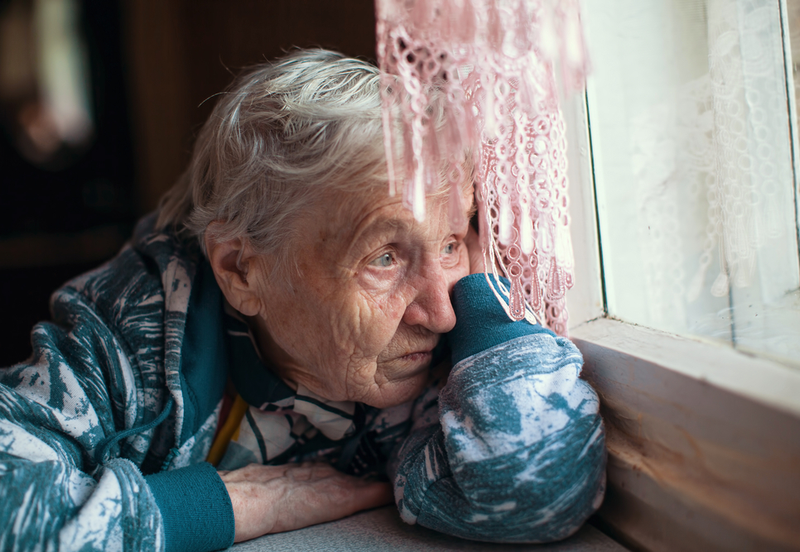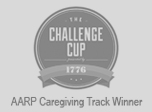4 Safety Tips to Creating a Dementia-Friendly Home
According to the World Health Organization, around 50 million people worldwide have dementia, with nearly 10 million new cases every year. Contrary to popular belief, dementia is not a single disease, but an overarching medical term used to describe a variety of disorders and injuries caused by abnormal brain changes. Alzheimers is the most common form of dementia, accounting for 60 to 80 percent of cases.
Alzheimer’s disease and other forms of dementia typically causes a progressive decline in a person’s cognitive ability. Depending on the stage of the disease, their memory, reasoning and judgment, sense of time and place, balance, communication, and other cognitive skills can become severely impaired. A person living with dementia may forget how to do basic tasks like turning off the water or using the phone, which affects their ability to live independently and poses a serious safety concern — especially in emergency situations.
Taking care of a loved one with Alzheimer’s Disease or other forms of dementia is a multipart process that likely requires professional assistance. However, there are a number of home adjustments you can make to maximize safety and prevent potential injuries. To ensure your loved one’s living spaces are safe and easy to navigate, consider these 4 safety tips to creating a dementia-friendly home environment:
Inspect your Home for Tripping Hazards and other Fall-Risks
If your loved one is living with dementia, potential symptoms such as impaired depth perception, balance, and coordination may increase their risk for fall. According to the National Center for Biotechnology Information, adults living with dementia are also more likely to sustain major fall-related injuries, such as hip fractures and traumatic brain injury. As a result, it’s important to inspect your loved one’s home for potential tripping hazards, and incorporate safety measures to prevent falls from occurring.
To start, remove any tripping hazards in areas that the person living with dementia is likely to navigate throughout their day. The National Institute of Aging’s home safety checklist recommends discarding any excess furniture that restricts movement, clutter - such as piles of newspapers and magazines, and hanging extension cords from lamps and other electrical appliances. According to the AARP, people with dementia may also perceive clutter as a “visual hodgepodge” that can cause confusion, fear, and anxiety. Keeping an open and minimalist look to your loved one’s living space not only prevents fall risk, but also alleviates a potential stressor that comes with cognitive impairment.
In addition to removing clutter, there are other home adjustments you can make to reduce fall risk. This includes making sure your loved one’s home is amply lit — both during the day and at night with motion-sensor night lights—, installing grab bars, and placing non skid strips in the bathtub, shower, and bathroom floor.
Add Color Contrast to Improve Vision Perception
As the National Institute on Aging and National Institute of Health note, people with Alzheimer’s disease and other forms of dementia may “no longer be able to interpret accurately what they see.” Combined with symptoms of impaired visual and depth perception, a person living with dementia may find it challenging — and even dangerous — to navigate their homes.
To help improve your loved one’s vision perception, consider making the floors and walls different solid colors to provide contrast - making it easier to see and distinguish defined surfaces. Avoid patterns and limit the number and sizes of mirrors as they may confuse people living with dementia. Marking edges of steps with neon, glow-in-the-dark tape and glass doors with stickers will also help them move through areas susceptible to falls and collisions. Household and everyday objects, such as silverware and plates, can also be bought in sets of contrasting colors so that they are easier to identify.
Lock Away Dangerous Household Items
Due to symptoms of impaired judgment and decision-making, people living with dementia may misuse dangerous household objects. To prevent injury and bodily harm, It’s important to do a walk-through of your loved one’s home, and store away any hazardous items in securely locked cabinets.
In the bathroom, lock away any medication, mouthwash, cleaning supplies, and razors that can be fatal if used or ingested improperly. Electrical appliances, such as blow dryers and electric razors should also be locked away to prevent electrical shock. In the kitchen, place knives and other sharp objects in an out-of-reach cabinet with a childproof lock. Similarly, all electrical appliances including microwaves, food processors, and toasters should be unplugged and stored away when not being used. Cleaning products in both the kitchen and laundry room such as bleach, all-purpose cleaner, and laundry detergent should be safely put away as well.
Install a Smart Home Security System to Prevent Wandering
For people living with dementia and their loved ones, wandering is a scary and stressful situation to prepare for. It can be potentially life-threatening, as the person may wander into an unsafe environment, miss vital medications when away from home, or contract illnesses in inclement weather conditions. To reduce the risk and dangers of wandering, consider installing a smart home security system that uses a network of alarms, sensors, and surveillance tools to ensure the safety of your loved one living with dementia. Smart home security devices often come with a companion smartphone app that can send security alerts via phone notifications to caregivers and family members alike. By placing sensors around their home, your smartphone app can immediately notify you of open doors and windows your loved one can exit from. Electronic door alarms can also be used to alert you or a caregiver whenever your loved one with dementia attempts to leave unsupervised.
If you or a loved one is considering aging in place, visit our Aging in Place tool that connects users with a comprehensive marketplace of services and benefits in your community. Click here to learn more.














